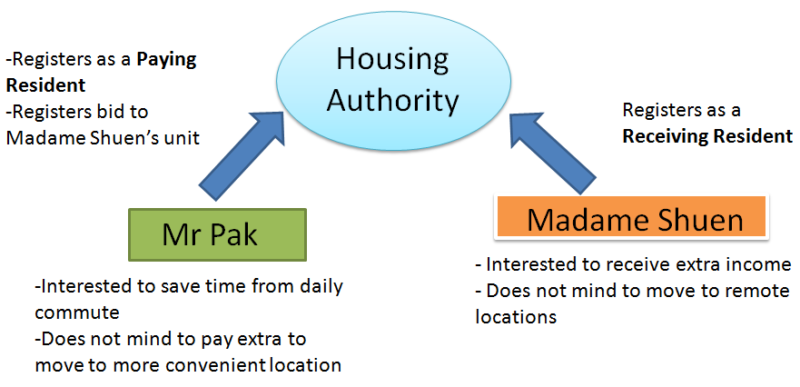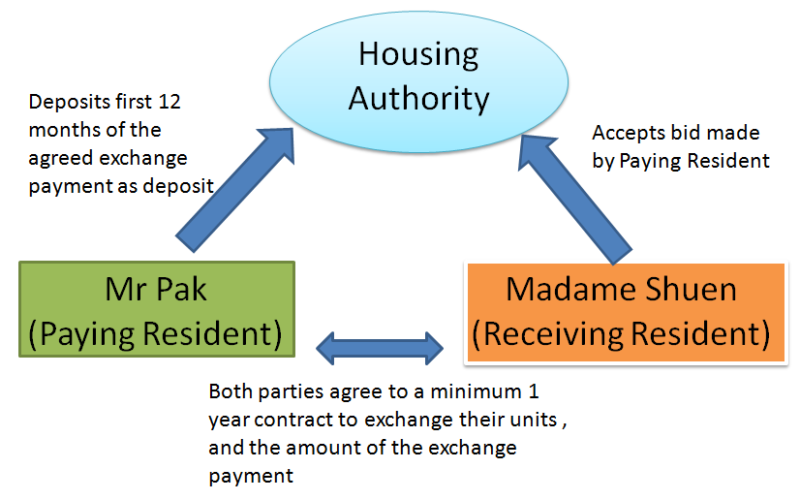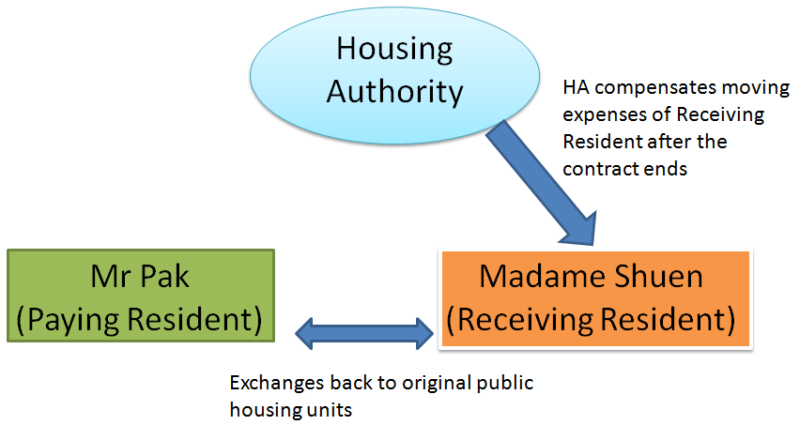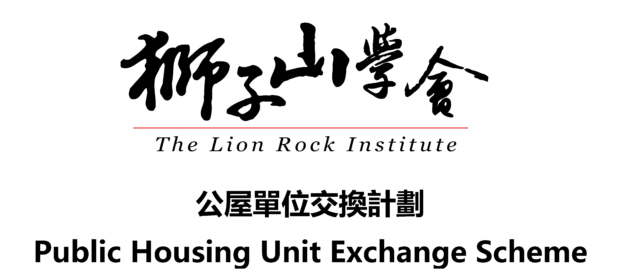The Lion Rock Institute Public Housing Unit Exchange Scheme
The Lion Rock Institute
Public Housing Unit Exchange Scheme
Overview:
Nearly half of Hong Kong’s population lives in public housing, but is this housing stock being used efficiently? No! The currently system is highly inefficient, leading to wastage of scarce land resources. Here’s why.
Once a public housing resident enters into his/her flat, there are extremely difficult hurdles to overcome before he/she can move to another flat in another location. There are many cases where people will prefer to move. If people lived in flats that are fitter for their needs, then these people would be better off. Under the current system residents cannot freely move to units that they deem more suitable for themselves, even if they are willing to pay an extra sum of money every month.
Under the current system, there are two ways in which people can move units:
The first way is to apply for a transfer, which involves giving up your unit and reapplying for a new unit, which on average takes 3.9 years, far too long.
The second is to apply for a transfer which is only granted under special circumstances such as overcrowded families or emergency situations such as domestic violence. The current system that handles these transfers is extremely inefficient, there are some cases where a family has to wait for 10 years in order to move to a unit that is more suitable to the size of their family.
The Lion Rock Institute proposes the government to adopt a new system which allow residents of public housing to be able to exchange units so that they can live in units that they deem more suitable for their needs.
The details of the scheme:
An example of this might be the case of Madame Shuen and Mr Pak. Madame Shuen is a retired lady living in public rental housing in Sham Shui Po, Mr Pak also lives in public rental housing in the New Territories but works in Central, and has a 2.5 hour daily commute to work. They would both benefit from this scheme, as Mr Pak would prefer to live in Sham Shui Po in order to have a shorter commute and save up to 1.5 hours every day. Madame Pak would prefer to live in the New Territories and also and gain some additional disposable income.
1. Three parties are involved. First, Mr Pak would pay in order to move to a more convenient location, so he registers as a Paying Resident, and registers his bid to the unit which is currently occupied by the second party involved, public housing resident Madame Shuen. Madame Shuen is interested to move if she can receive an extra sum of money every month. The third party, which is the Housing Authority, acts as the facilitator of this unit exchange, and handles the transaction.

2. Madame Shuen accepts Mr Pak’s bid, and together the Paying Resident and the Receiving Resident, agree to the details of a minimum one-year contract, and the amount of an exchange payment. Mr Pak will have to place the first 12 months of exchange payment with the Housing Authority as a deposit.

3. The residents exchange units, half of the rent from Mr Pak (Paying Resident) goes to the Housing Authority and the other half goes to Madame Shuen (Receiving Resident). The Housing Authority keeps 3 months of exchange payment as compensation of moving expenses for Madame Shuen after contract expires.

4. Once the contract has expired, Madame Shuen and Mr Pak can choose to extend the contract or move back to their original units after giving 3 months of notice. If they desire to move back to their original units, Madame Shuen’s moving expenses will be covered by the Housing Authority.

Eligibility for bid and exchange
There are three criteria that determine eligibility
- Must be current public housing residents
- Flat size of both flats must fit the number of residents for an exchange to occur
- The bid payment has to be greater than the current rent per month.

